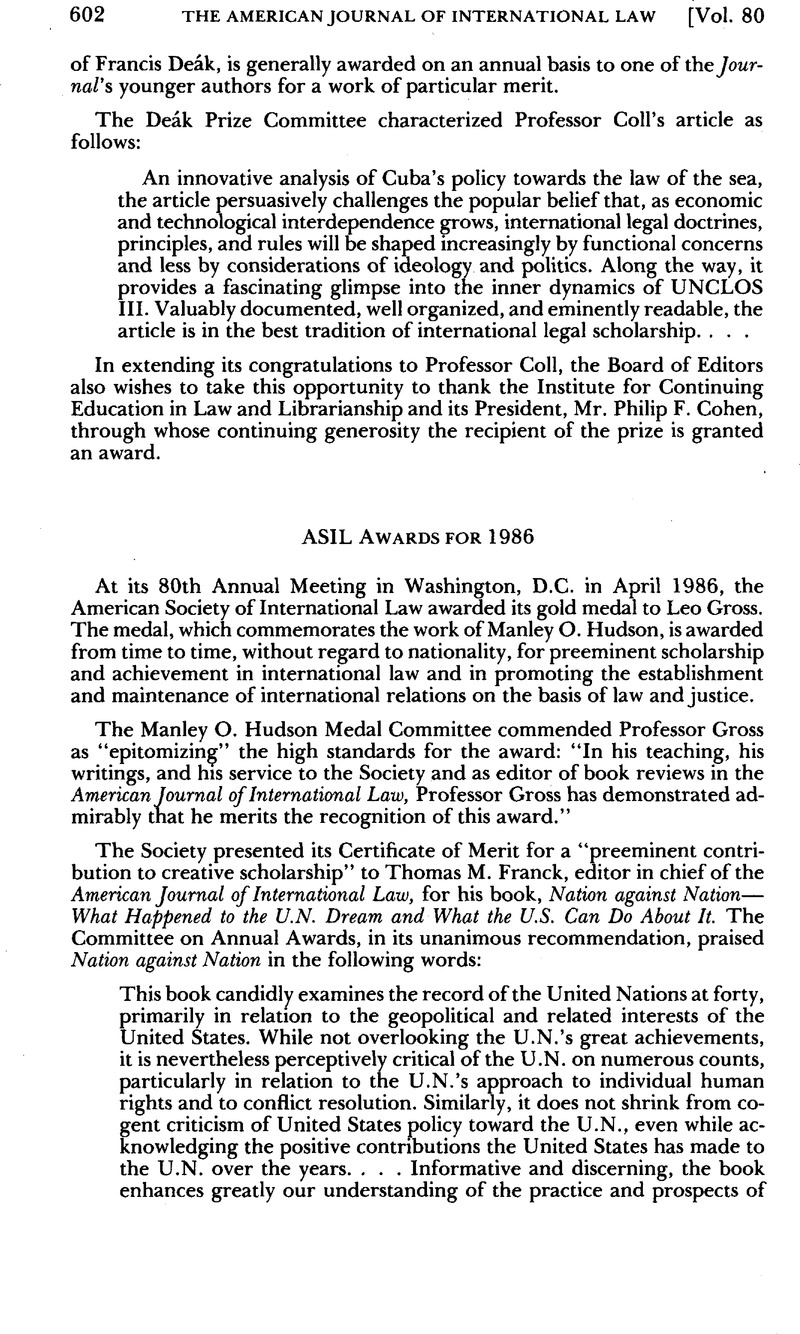No CrossRef data available.
Published online by Cambridge University Press: 27 February 2017

1 See, e.g., Trooboff, P., Law and Responsibility in Warfare 176–84 (1975)Google Scholar.
2 The German Military Code in force during World War I provided that if the execution of an order involved a punishable violation of law, the superior officer issuing such an order was alone responsible. However, that code also provided that the subordinate obeying the illegal order was liable to punishment if it was known to him that the order concerned an act that was a violation of law. The High Command Case, 11 Trial of War Criminals 462, 509 (1948). This latter provision was applied by the German Supreme Court in Leipzig in 1921 in The Llandovery Castle Case. 1 Friedman, L., The Law of War: A Documentary History 868, 881 (1972)Google Scholar. (The superior officer had disappeared and was not on trial, but the Court left no doubt that had he been a codefendant, he, too, would have been found guilty and would have been punished more severely than his subordinates.)
3 Levie, H., Documents on Prisoners of War 294 and 319 (1979)Google Scholar; In re Yamashita, 327 U.S. 1 (1946).
4 Reel, A., The Case of General Yamashita (1949)Google Scholar; Lael, R., The Yamashita Precedent: War Crimes and Command Responsibility (1982)Google Scholar. Reel was an assistant defense counsel at Yamashita’s trial and his bias is obvious. Although Lael found grounds for criticizing the Military Commission that convicted Yamashita for its application of the doctrine of command responsibility, he is a far more impartial analyst of the trial than Reel. I concur with Professor D’Amato’s statement that “General Yamashita’s case met both elements of command responsibility with respect to some of the war crimes committed in the Philippines.”
5 The phrase “should have known” was omitted.
6 Protocol Additional to the Geneva Conventions of 12 August 1949, and relating to the Protection of Victims of International Armed Conflicts (Protocol I), opened for signature Dec. 12, 1977, reprinted in 16 ILM 1391 (1977). The United States has not ratified this Protocol and apparently does not intend to do so.
7 Agreement for the Prosecution and Punishment of the Major War Criminals of the European Axis, signed Aug. 8, 1945, 59 Stat. 1544, 3 Bevans 1238, 82 UNTS 279.
8 Jan. 19, 1946, amended Apr. 26, 1946, TIAS No. 1589, 4 Bevans 20.
9 1 Trial of War Criminals, at xvi (1947).
10 See Law Reports of Trials of War Criminals, passim (1947–49).
11 International Committee of the Red Cross, Remarks and Proposals 19, 34, 64, and 85 (1948); 2B Final Record of the Diplomatic Conference of 1949, at 114.
12 6 Official Records of the Diplomatic Conference on the Reaffirmation and Development of International Humanitarian Law Applicable in Armed Conflicts 307 (1978); H. Levie, Protection of War Victims: Protocol I to the 1949 Geneva Conventions. Supplement 38 (1985).
13 It may be assumed that in the next war crimes trial involving the defense of superior orders, a well-informed defense counsel will urge that the actions of the two Diplomatic Conferences indicate that subsequent to the completion of the program of World War II war crimes trials, the international community decided that the denial of the right to defend on the basis of superior orders was inappropriate.